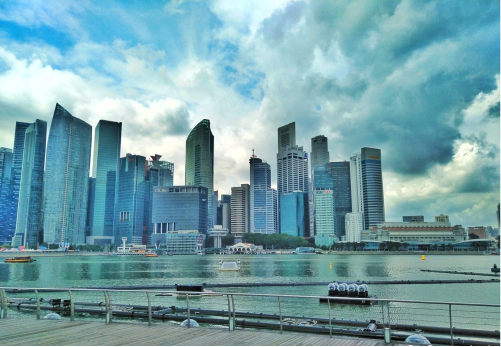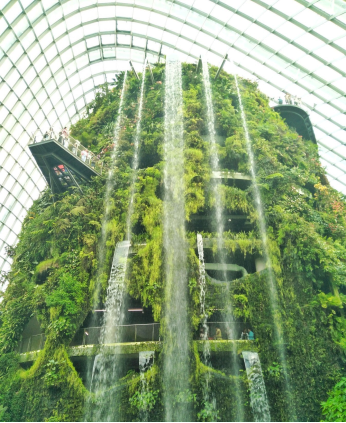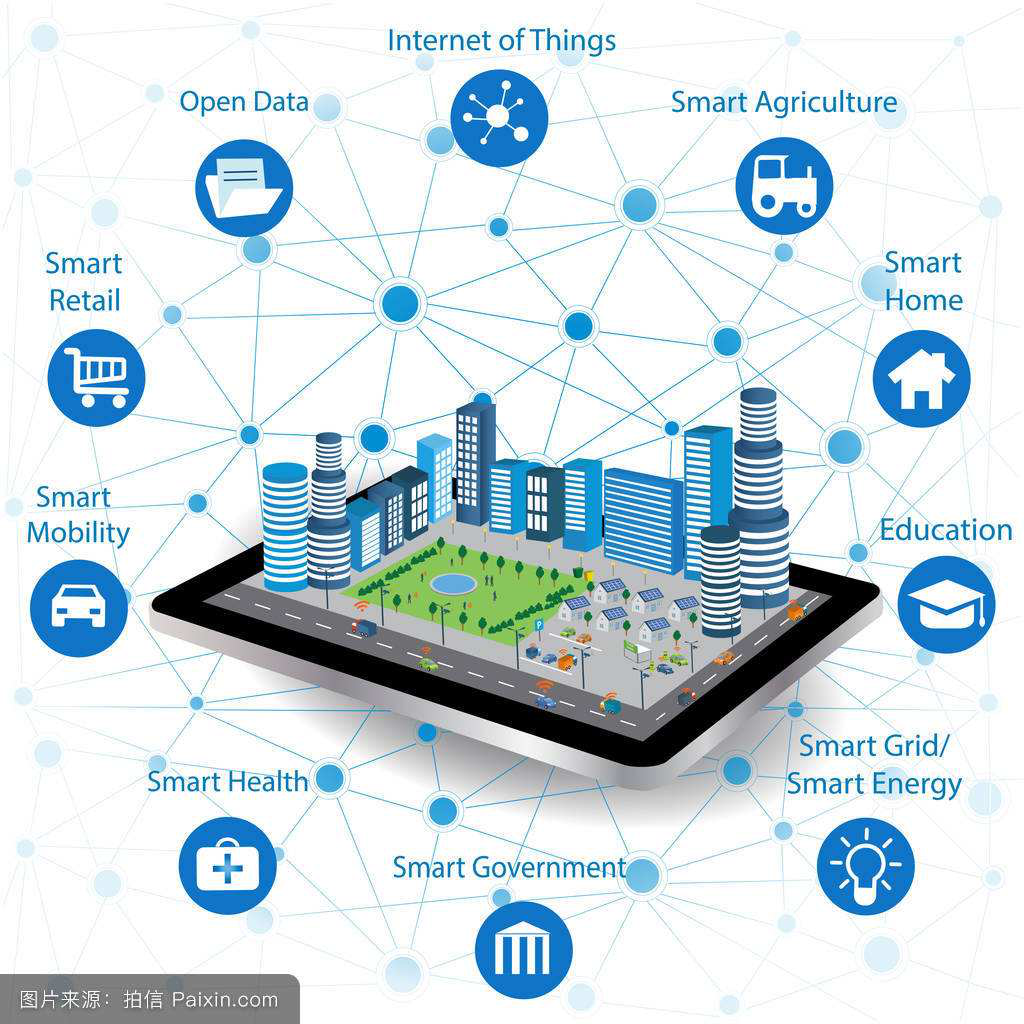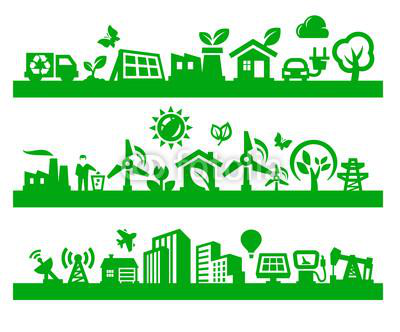In this winter holiday, I travelled to Singapore, a small but well-developed country, and I had the privilege of witnessing all the greatness and glory an elaborately-planned modern city can bring about.

Numerous impressive skyscrapers make up of the skyline
Singapore’s unique reputation as a Garden City is owed to its beautiful greeneries and clean environment.When you wander around enjoying the beauty of nature, it is quite unlikely that one can find the slightest stain like a cigarette end.

A garden city
Among all the tourist attractions, the Solar Supertrees leftthe deepest impression on me, for they look so simple but so strikingly stunning and incredibly amazing. Designed by British landscape architecture company Grant Associates, there are 18 towering man-made trees, with the height of 25-50 meters and over 150 thousand plants of all kinds of provenances dwelling on them. The design of Solar Supertrees, whose every part exists to pay homage to the great nature, reveals the ideal living status and perfect harmony architectures and a city can have between them.

The ever-changing light performances presented by the Solar Supertrees
This whole-new experience kindles my curiosity and makes me think about the future of our cities. Then suddenly two words pop up in my mind -- Smart and Friendly.
What may a Smart City have? Intelligent devices like face recognition systemsall around communities? Zero-carbon industry and transportation system? Or a large green parkland downtown? In brief, a prospective city’s inner constructions, tightly linked with the revolution of ecology, whether they are visible or invisible, should be smart and friendly.

Days ago, Tesla announced a brand-new vehicle called Semi, an electronic truck, instead of a roadster. More days before that, Apple decided to apply an energy-savingtechnology to its devices. And a lot more days ahead of it...
What these advances in Information and Communications Technologies (ICTs)construe may be an unprecedented inclination of the intellectual products – to be created and utilized in a smarter and eco-friendlier way. It is conspicuous that an increasing number of aspects (e.g. virtual reality and unmanned conveyances) will be affected by the rapidly developing ICTs. For instance, the Big Data will play a leading part in altering the approaches to collecting, storing and analyzing the massive amount of information, showing great abilities to filter and summarize. With it, an organization doesn’t need to handle a large amount of data only to draw an unreliable conclusion, which used plenty of human resources. That enhances the effectiveness from one field to the whole society, while, thanks to computers, we don’t need to produce so much litter like paper and bags. To put it simply, ICTs will make contributions to the city’s inner SMART CONSTRUCTIONS by changing our ways of thinking, working as well as saving resources.
But who offers us such opportunities to accomplish things listed above? Undoubtedly we cannot ignore the role the stakeholders (consortia and multinational companies)play in the process of the establishment of a Smart City. It should be noted that the blueprints and frameworks they provide are also of significance, in addition to what has been mentioned above – the practical innovative invention. Stakeholders will serve as a Think Tank since their associations or corporations are a sturdy base of talents offering continuous thoughts and designs. With the boom of creations and ideas, to organize themis the crucial stage of the Smart City process, which signifies these sponsors should undertake the responsibilities to implement miscellaneous constructions such as reducing contamination, rendering financial assistance, propagating knowledge and so forth.
Apparently, the stakeholders’ action itself can be regarded as inner FRIENDLY CONSTRUCTIONS, that is, to interact in some main fields and deliver incessant propellants while cooperating efficiently and amicably with other related investors in the Smart City process. Therefore, to launch a Smart City and make it thrive, it must be ascertained that administrations and stakeholders are always in a reciprocal relationship. Under these circumstances, executive rules should be simplified to a rule of 3 “to”s– to encourage, to oversee and to coordinate.Further explanations about these are as follows.
The initial one is to encourage because only in this way can the source of novelties and wealth become inexhaustible on the occasion when China has already possessed the basic conditions of building an innovation-oriented country. Consequently, it is demanded that Einrichtungsgarantie (appropriate and active institutions and policies), economic cornerstone and people’s comprehension should all be attained to make SMART encouragements available. After this will be the irreplaceable supervision(to oversee). Heaps of work to be completed throughout a smart urbanization, the government shouldn’t always be “easy-going”. Nevertheless, more rigorous restrictions need to be carried out during the burgeoning period in case of embezzlement and illegal pollution in the name of making our life smarter. Above all, how to balance both the incentives and supervision in a friendly way comes down to the third one – to coordinate. Evident as it is, it’s a huge job for the governmental departments to achieve such an inner equilibrium, which simultaneously embodies the two notions put forward in the title, SMART AND FRIENDLY CONSTRCTIONS.

Although Smart City sounds fantastic with things we are longing for, the concomitant challenges and opposing effects are not to be neglected.
In the first place, fiscal problems are a big obstacle when envisaging outlines of an innovative urban area. How to attract public attention to donation and increase the revenues? And with the problem of money solved, what can we do with the income without a SMART structure of expenditure? Furthermore, the stability between ecological quality and intelligentization is another problem. Industries, even the intellectual ones, must go with certain amount of contamination, albeit in a lower level, and maybe that goes against the origin of Smart City as we deem, posing a temporary threat to the surroundings. But every country’s industrialization and road of being smart should go through with this hiccup, so we just need to control the adverse impacts properly and anticipate the benefits it will bring us, in other words, be confident and FRIENDLY with the stakeholders and the government as a member of our future city. Once the difficulties raised by the finance (SMART) and the public (FRIENDLY)are overcome, there comes the smooth Smart City process.
In summary, a future city’s inner constructions, no matter in the physical aspects or the to-be-realized hopes, should be smart and friendly. Itis SMART for everything functioning effectively, and FRIENDLY for everybody supporting the groundbreaking opinions and making a harmonious coexistence with the environment.

